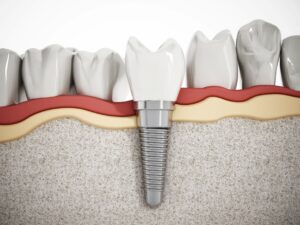
Did you know that many experts today consider dental implants to be the gold standard of tooth restoration? Of all the options, they’re the only one that includes a support rod inserted into your jawbone. This keeps it active and healthy which provides unique benefits like preserving your remaining teeth and facial structure.
Today, dental implants have an incredibly high success rate of 90%-95%, but that hasn’t always been the case. Keep reading to learn more about the evolution of this extraordinary treatment and why there’s no better time to pursue it!
Ancient Attempts
Humans around the world have sought appropriate methods for replacing missing teeth for thousands of years. Archeologists discovered that the earliest ‘dental implant’ was from China around 600 A.D. Back then, people carved bamboo pegs and fixed them to their jaws to rebuild their smiles.
Then, in 1000 B.C., Egyptians did the same thing but used precious resources like various metals, ivory, and rare gems like jade. In fact, the first recorded case of a dental implant dates back to an Egyptian king from this time period.
Early Modern Updates
The earliest efforts to replace missing teeth with foreign objects continued to fail because the materials weren’t compatible with the human body. They were continually rejected and so there had been no ‘successful’ dental implants.
As a result, in the years 1500-1800, scientists began experimenting with various metallic alloys and other substances, like porcelain. These continued to fail, and it became common practice to use teeth from human cadavers as replacements, instead.
Modern Materials
Dental implants didn’t see much progress until the 1900s when two brothers, Drs. Alvin and Moses Strock, discovered that Vitallium could be used to rebuild mouths. They had seen it used in hip-bone transplants and adapted it for use in people’s mouths. Their attempts lasted longer than others, so they’re credited with having the first successful procedure.
Then, in 1952, Dr. Per-Ingvar Branemark accidentally made a discovery that would change these restorations forever. He was studying healing and regeneration and placed titanium into a rabbit’s femur. When he went to remove it, he discovered that it had fully integrated with the bone.
He applied this knowledge to teeth and placed the first titanium implants into a human patient in 1965. This was so successful that he published his research which became widely accepted by 1982.
Today’s Technology
Although titanium is still used today, continued advancements in dental technology and techniques have led to many improvements in dental implants. Now, your dentist can create a more accurate and lifelike restoration than ever before. They have access to X-rays and digital imaging to build more accurate replacements, and with modern materials like durable porcelain, they look more lifelike than ever.
Thanks to the many failures over the years, today, dental implants have become the ideal method to replace your missing teeth!
About the Author
Dr. Sean M. Altenbach provides a full range of dental services to patients of all ages, including dental implants. He earned his bachelor’s degree in human nutrition at the University of Florida, where he later achieved his dental degree. Since then, he has continued to expand his skills with ongoing training and certifications. As a result, he’s an expert who uses advanced technology to see you through every stage of the dental implant process from the initial planning, to the surgery, to creating the final restoration. If you need help rebuilding your grin, you can request a consultation on the website or by calling (904) 448-0441.
